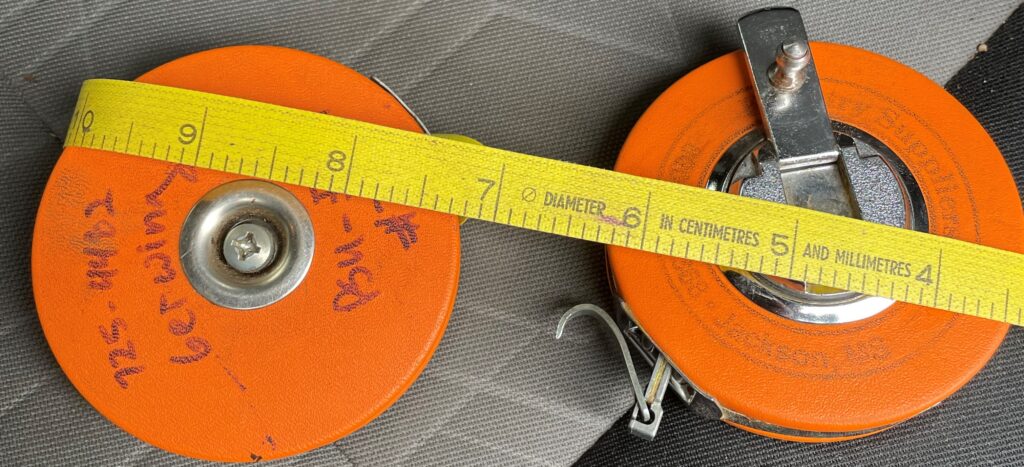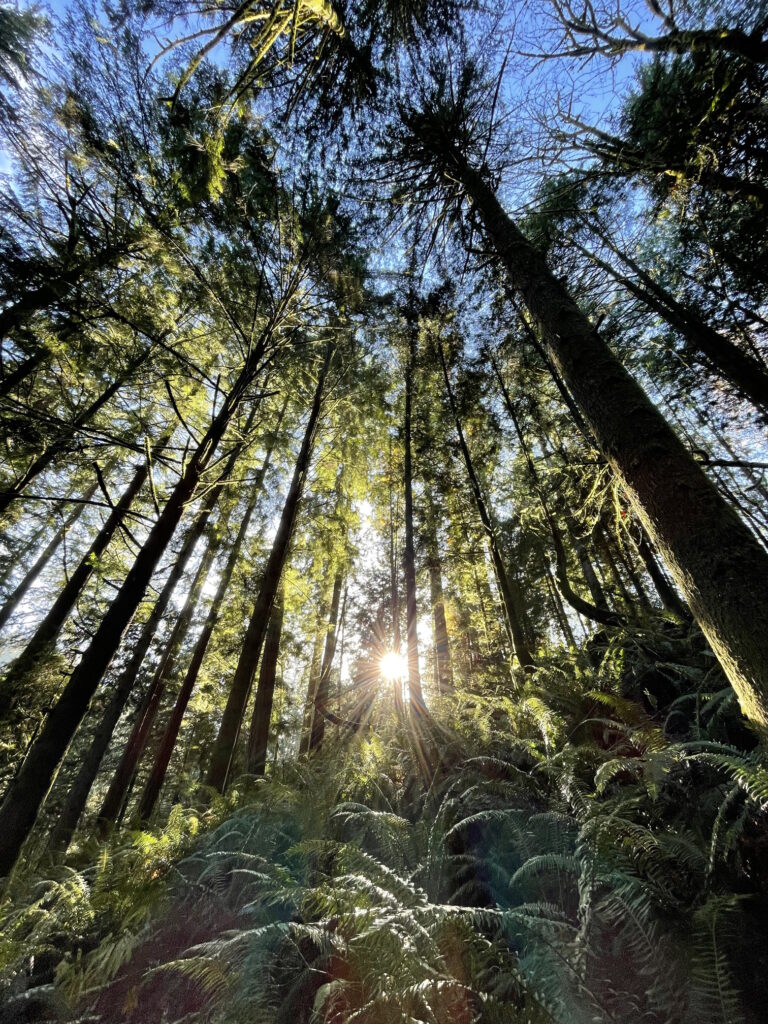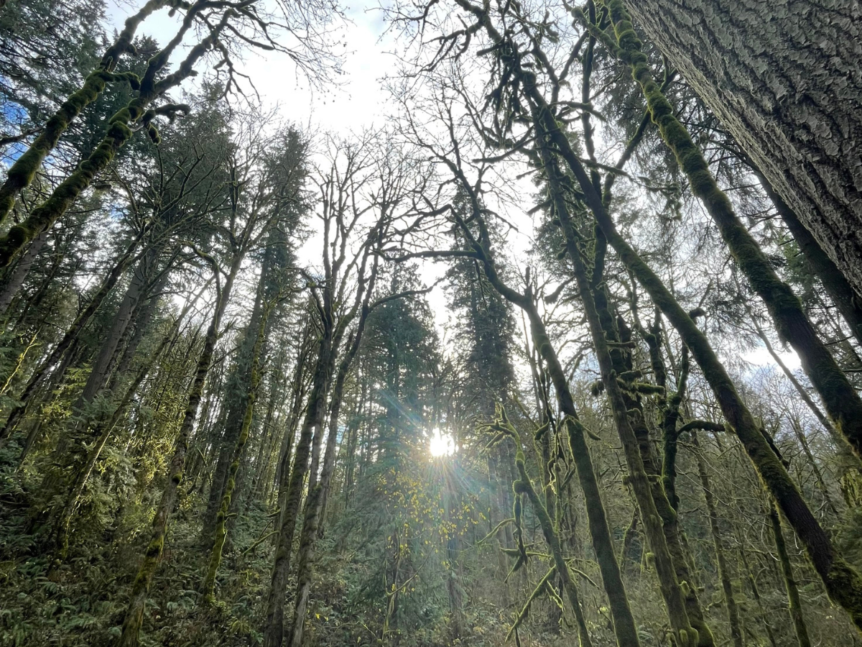One of the great privileges of being a part of the Green Jobs Workforce Development team is having the opportunity to work in amazing outdoor spaces. The Ancient Forest Preserve (AFP) is a flourishing old growth forest tucked away from the hustle and bustle of downtown Portland. Our organization has recently inherited an ongoing tree inventory project in the AFP from Professor Jeff Gerwing at Portland State University. The study established 16 plots in the AFP, within which certain trees were measured for their diameter at breast height (DBH). These trees were marked with a tag, assigned a number, and identified by species. We received all of this data along with the DBH measurements from 2012 and 2017 – the previous two periods of data collection.
Dr. Gerwing showed us the proper method to collect the DBH of each tree. DBH is typically measured at 4.5 feet from the ground and, luckily for us, the tags on the trees were set at this height. Using a measuring tape with DBH units, we carefully wrapped the measuring tape around the tree ensuring that the tape remained at a uniform height. One team member would take the measurement and relay to another, who would write down the data. This process involved, essentially, giving all the trees a big hug while measuring their growth in the process. It seems like a very straightforward endeavor, however we encountered several obstacles along the way.

One of the biggest challenges we faced was finding all of the trees. The AFP is an extremely dense forest with an abundant undergrowth of large sword ferns, sprawling vine maples, prickly Oregon grapes, and mazes of downed branches and trees. Add in cold and wet winter conditions and you have yourself a taxing, yet adventurous, day in the field. Nonetheless, all of these factors made it difficult to navigate the forest and find trees with a small metal tag on them.
The tags themselves were also an issue. The metal tags are nailed into each tree, but there were numerous times where we found a tree with a nail in it, but no tag. In many of these instances we would list the species of the tree, document the plot that it was found in, and record it’s DBH. Once we completed collecting all of the data, there were a small amount of trees that we were unable to find. Of course, tags and nails could have fallen off of the trees, but there could also be a possibility that we missed some trees. We also ran into a few trees that had fallen over and were lying on the forest floor with their tag still attached. Despite the difficulties we faced, the project was a great experience and we were able to efficiently collect precise data.
Overall, the trees in the AFP are growing. DBH is a great way to quantify the growth and health of trees, but it is also important to be able to assess a tree’s health by observing it. A common observation by all of the Green Jobs team members was that there were a fair amount of trees that looked somewhat unhealthy. The AFP is near the highway and Portland’s industrial area which raises questions about emissions, air quality, and their impact on the health of the AFP. More intensive data analysis can be conducted to draw more conclusions about the relationship between climate and air quality on forest health.
Moving forward, this project will serve as an effective way to introduce the Green Jobs team to collaboratively collecting data in the field. Teamwork was a big aspect of this project; there is no way we could have finished this project in a timely manner without a team. Some of the trees we measured were huge and it is really difficult for one person to keep their tape at the same height all the way around the tree, so lending a hand from time to time was much needed. Having multiple people measuring made collecting data more efficient and it also allowed us to thoroughly search the entire plot for the trees. Data collection for this project will also be increased to an annual cadence instead of every 5 years as previously established. It is our hope that by measuring the trees annually we will have a better understanding of the health of the forest and obtain more comprehensive data.
From a more personal perspective, this project was a great way for us to get more diverse experiences outdoors. We often spend a lot of our field days remediating and restoring natural areas that are overwhelmed by invasive species so it was fun to explore the forest and get to know these trees on a deeper level. It was also an introduction to field methods and data collection which are valuable experiences and skills to have in the toolbag. We also regularly work at AFP, so to see how the forest has matured since the beginning of the project in 2012 is a special way for us to understand what’s happening in the forest on a deeper level.


